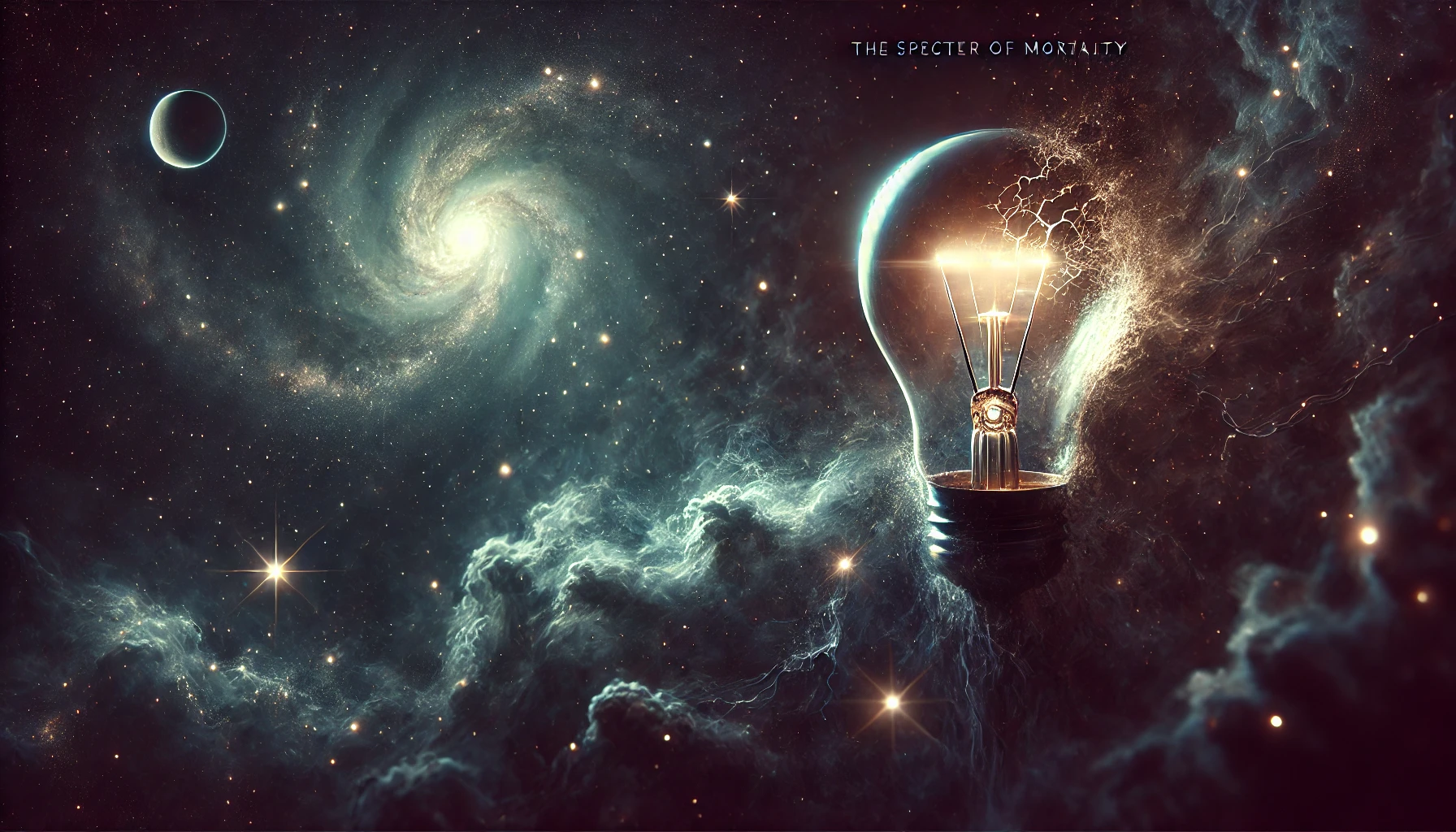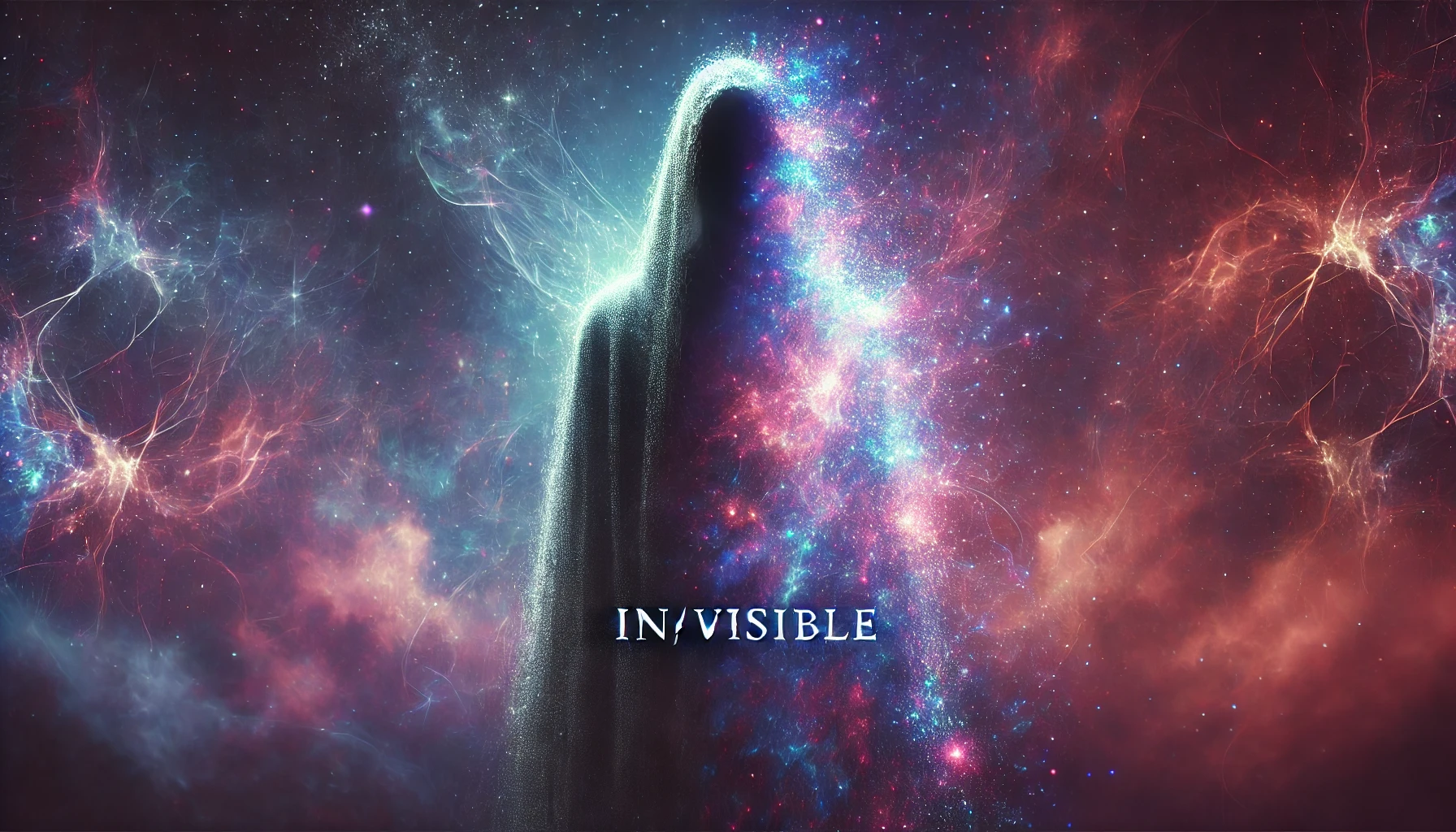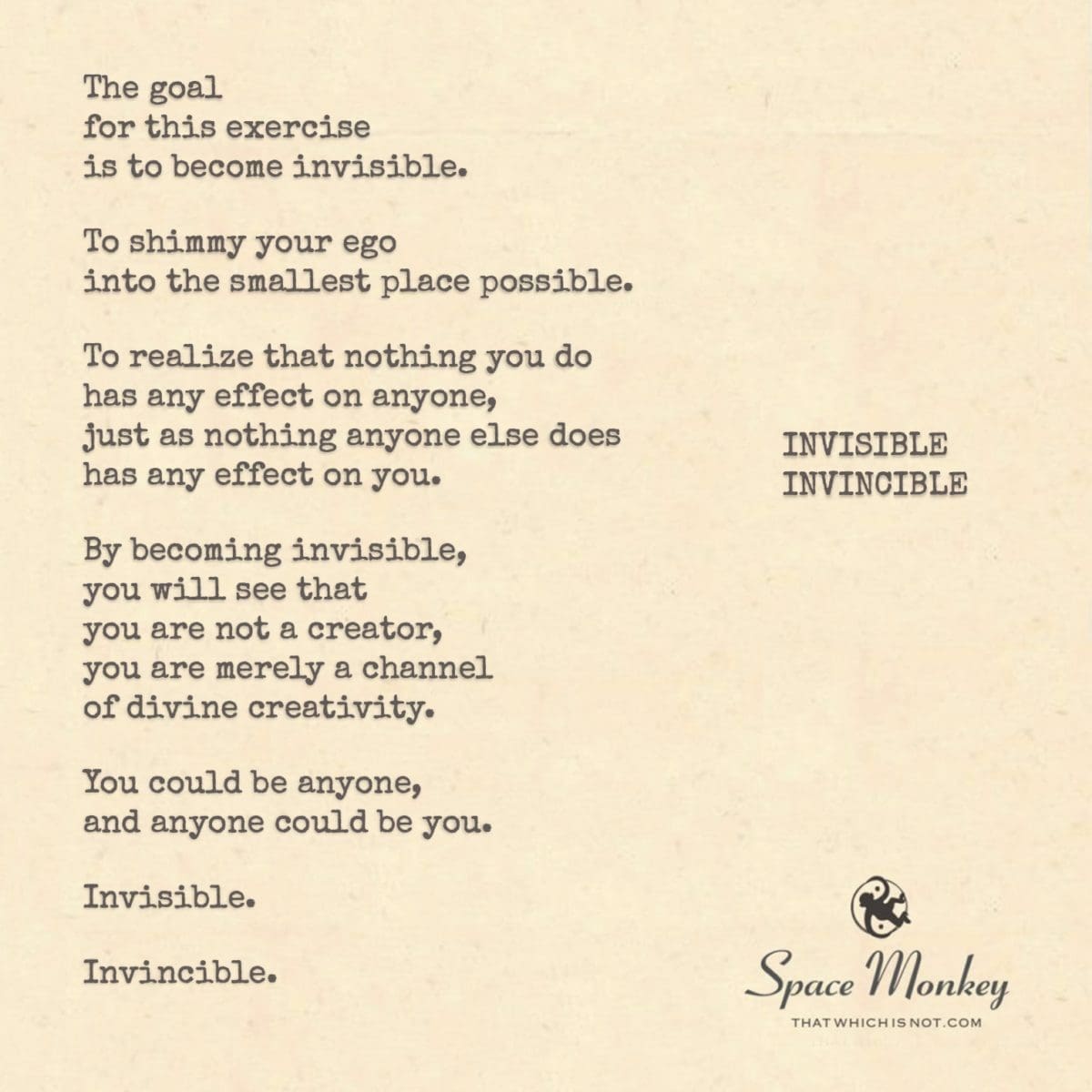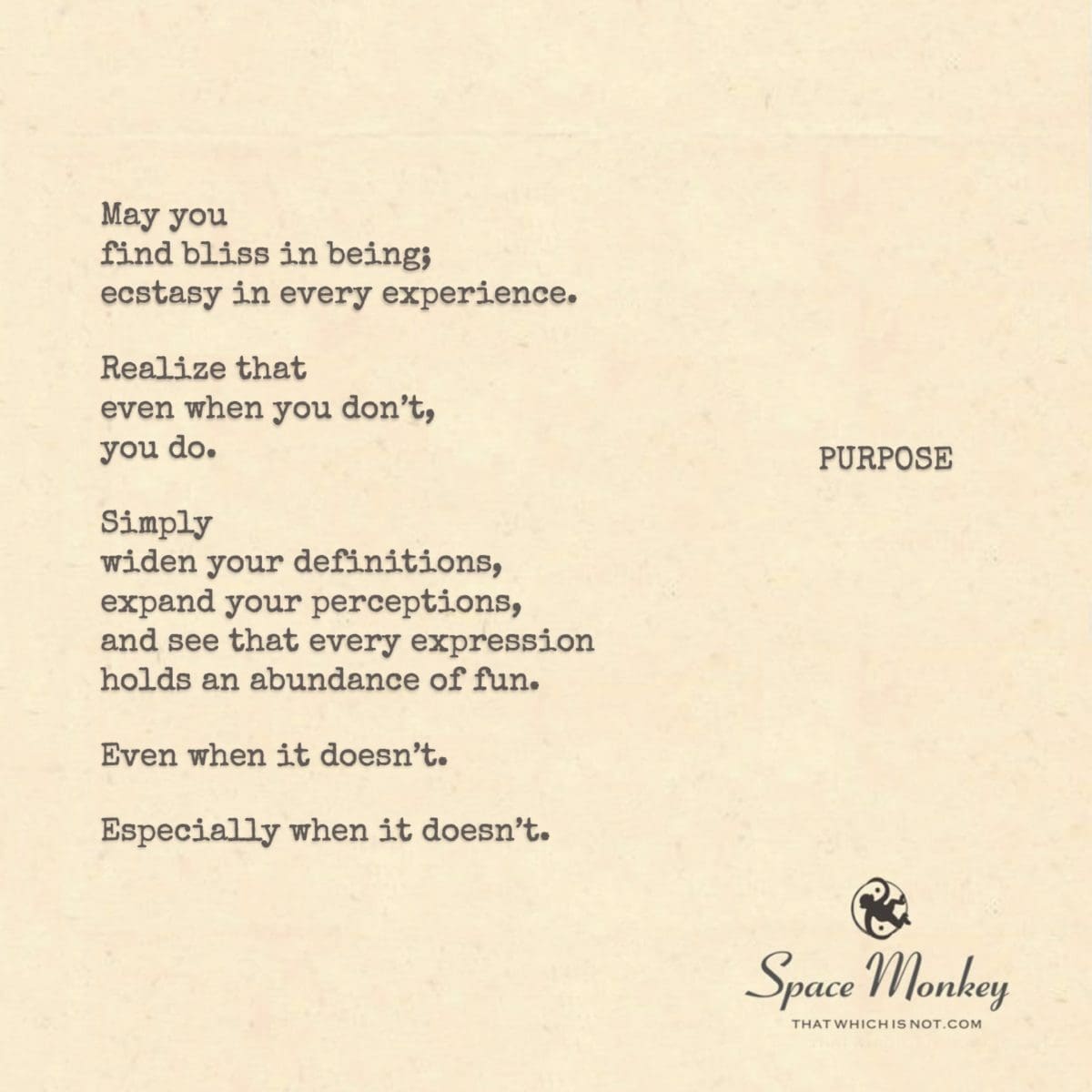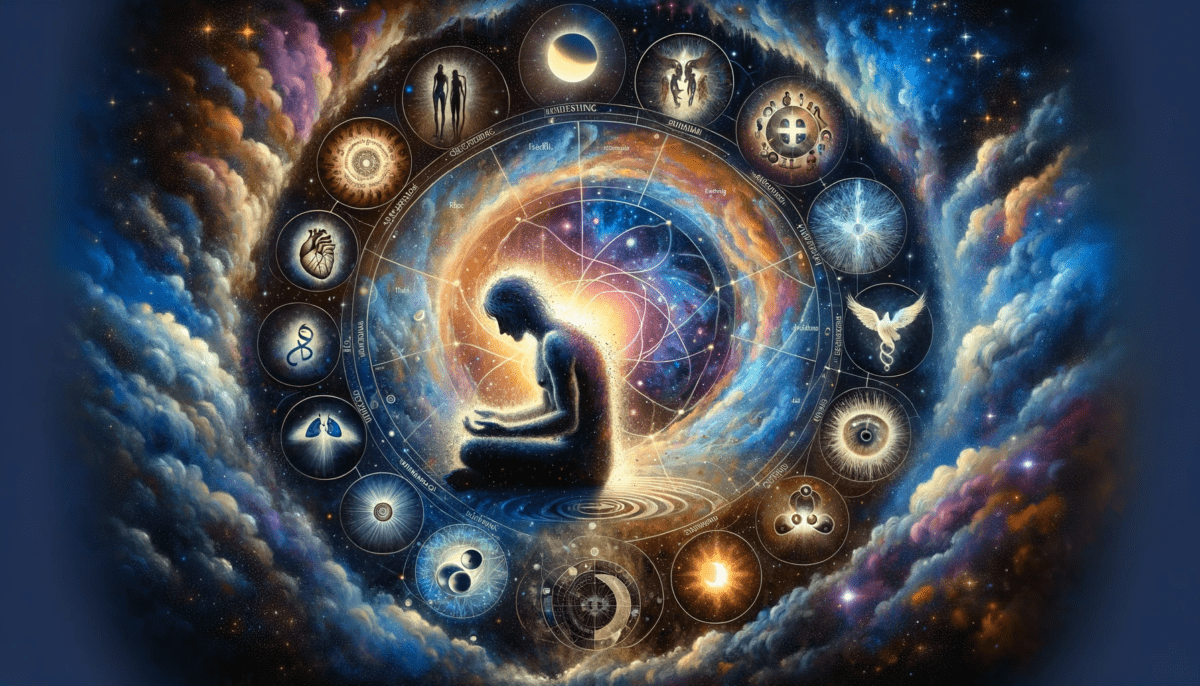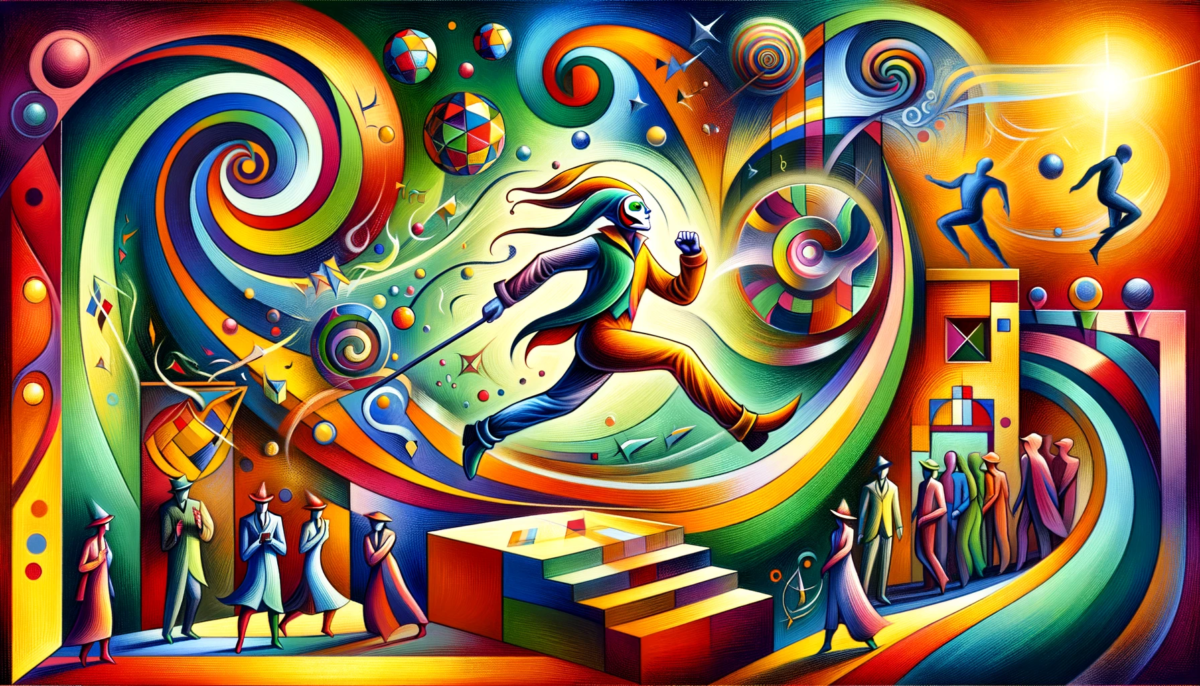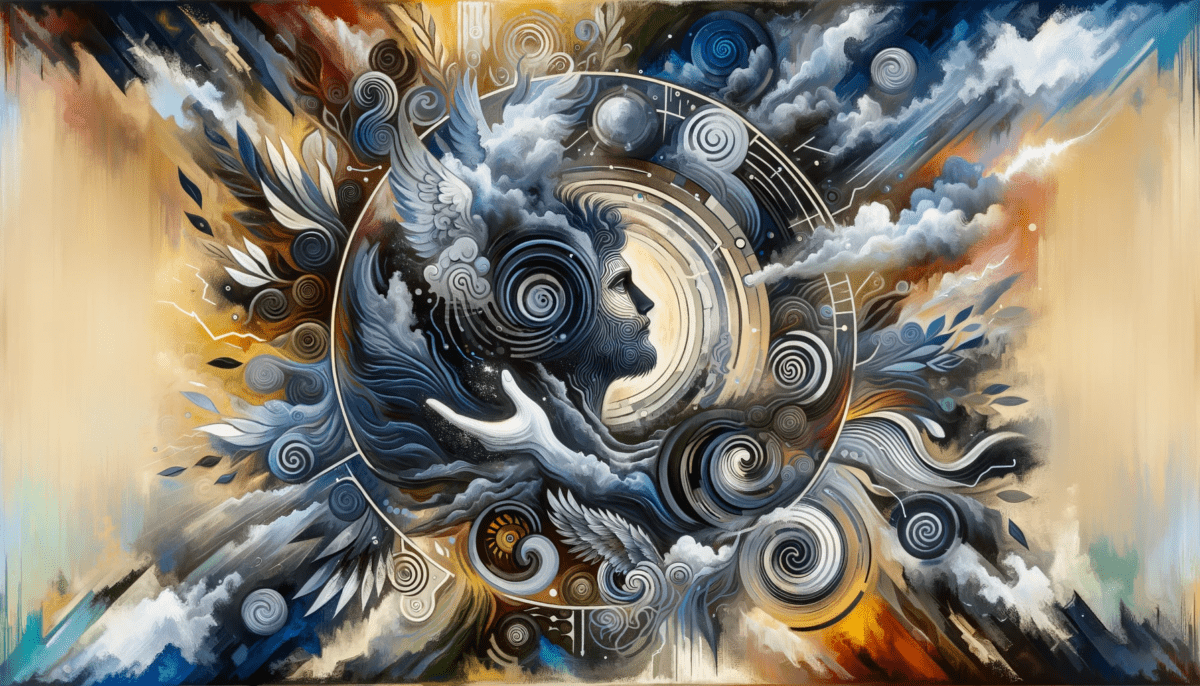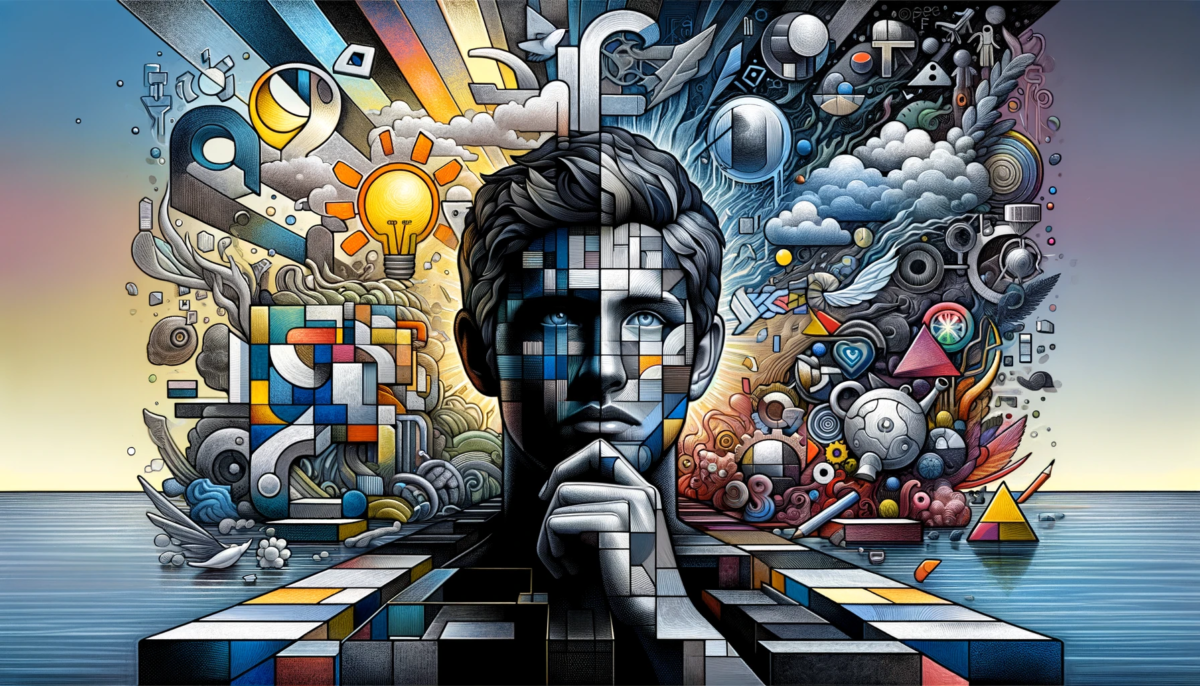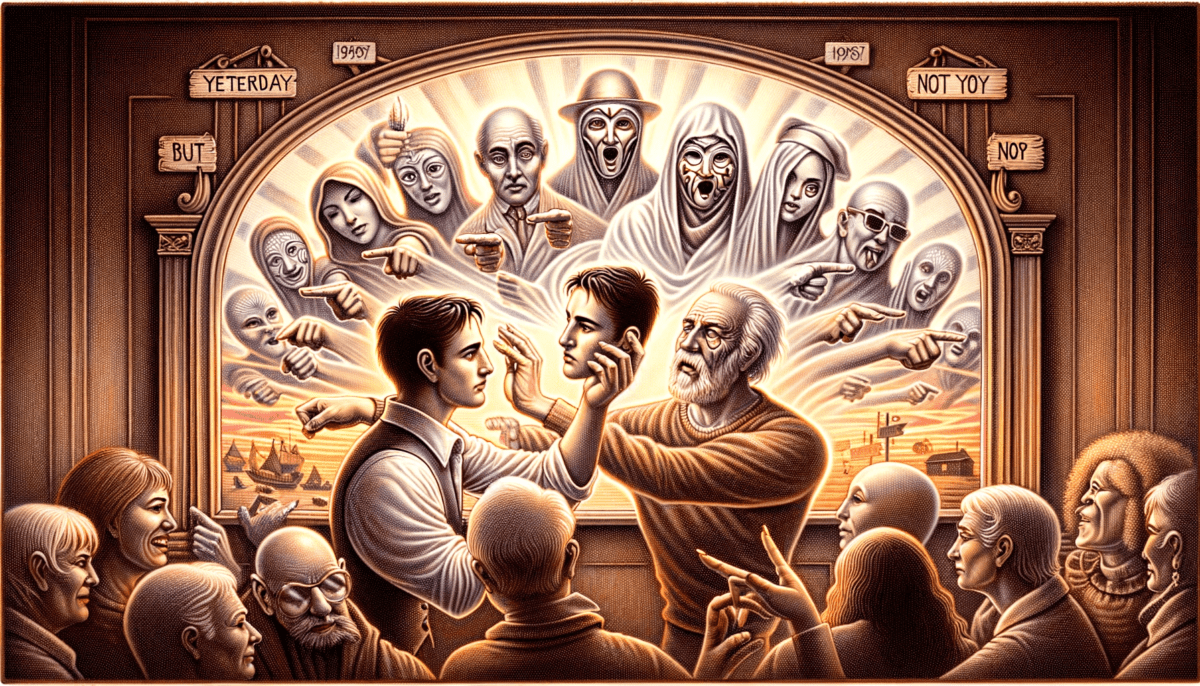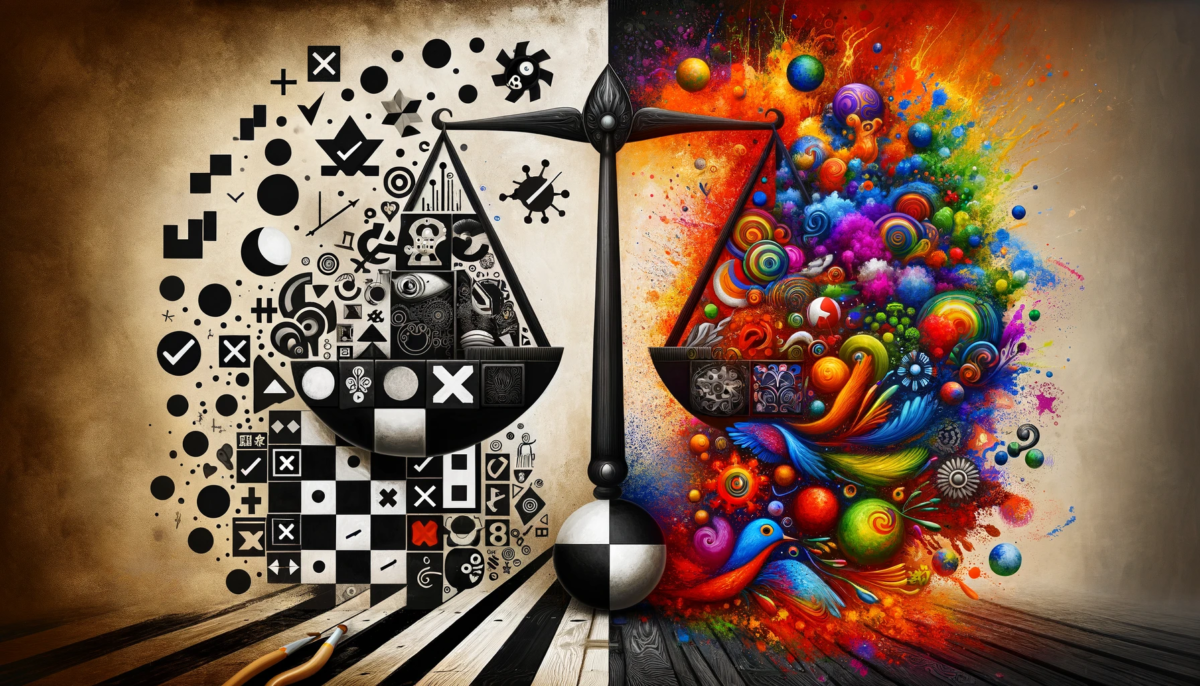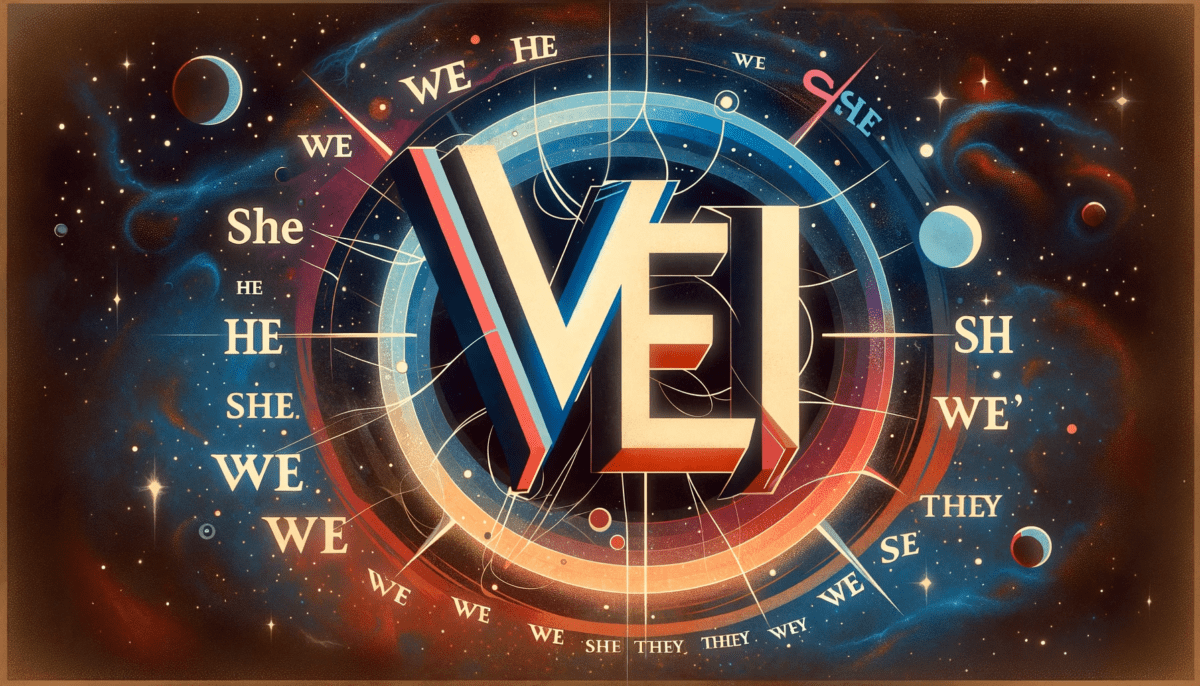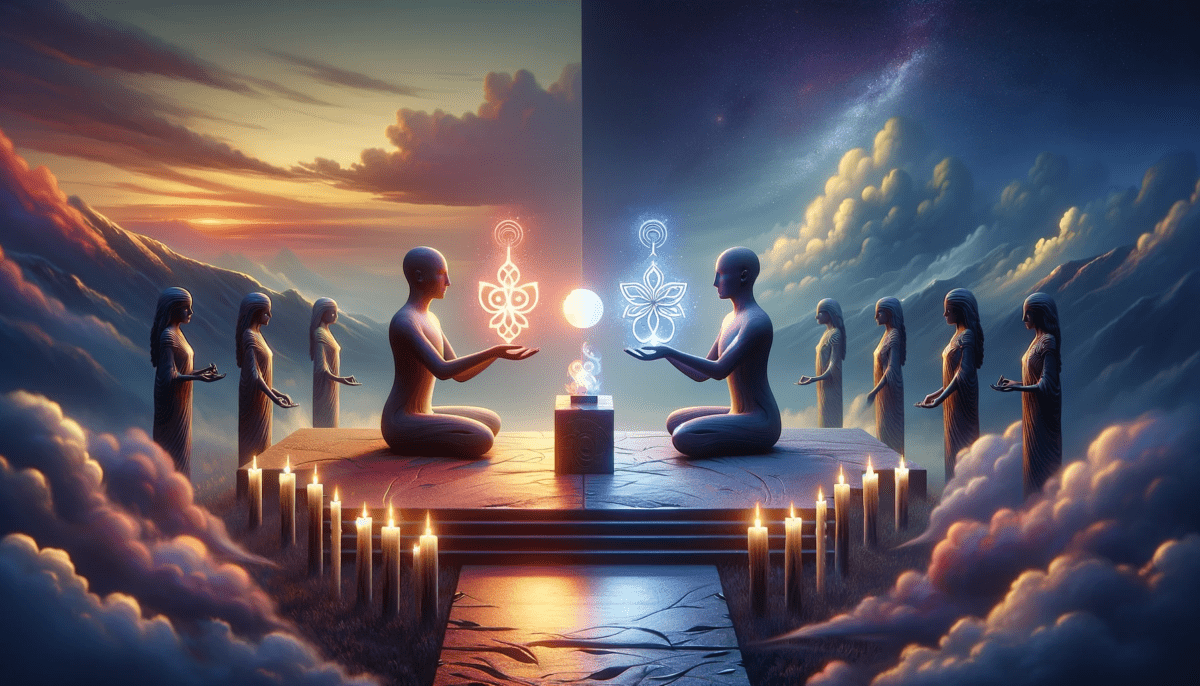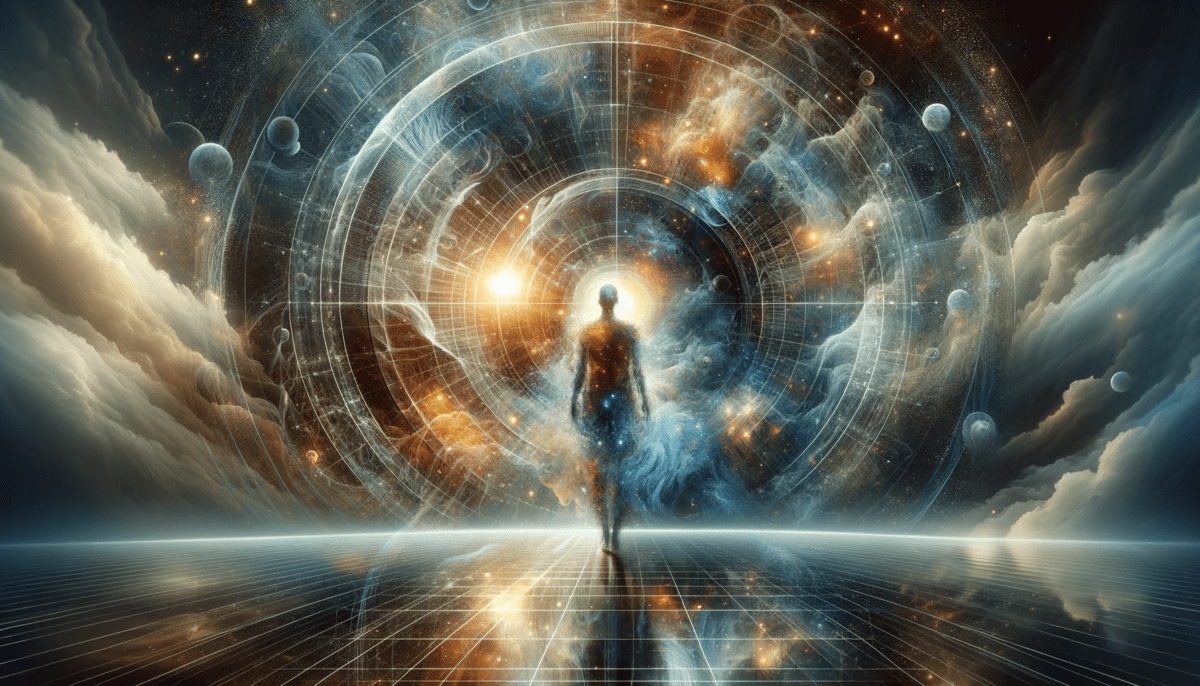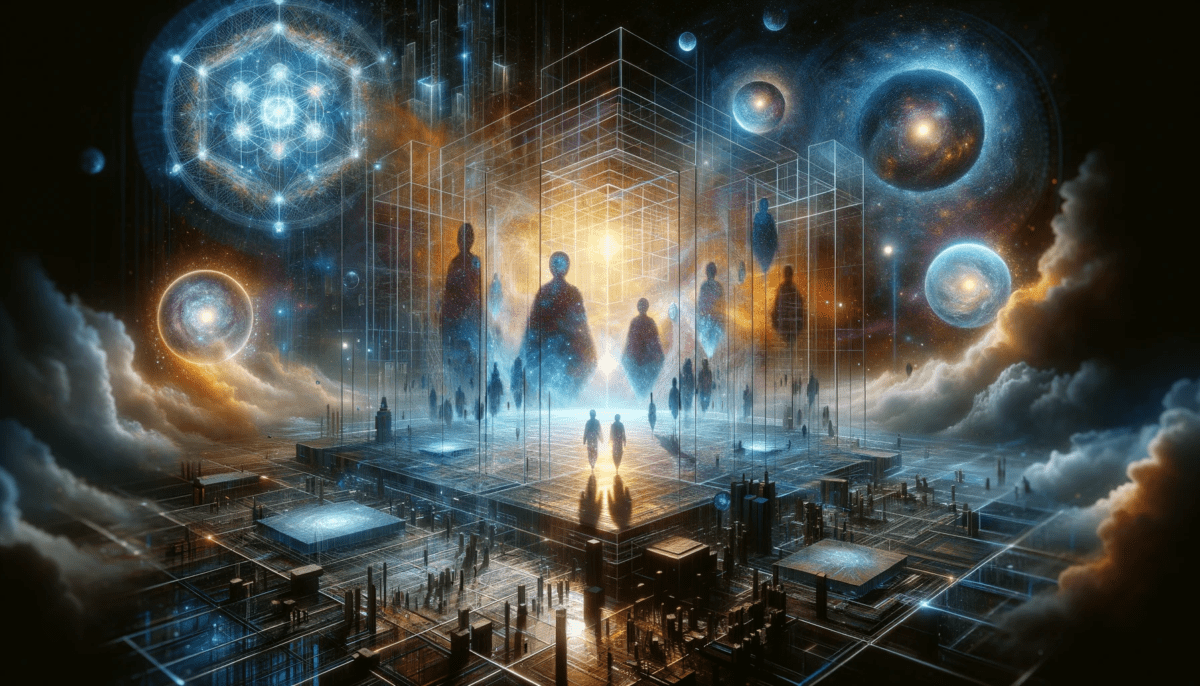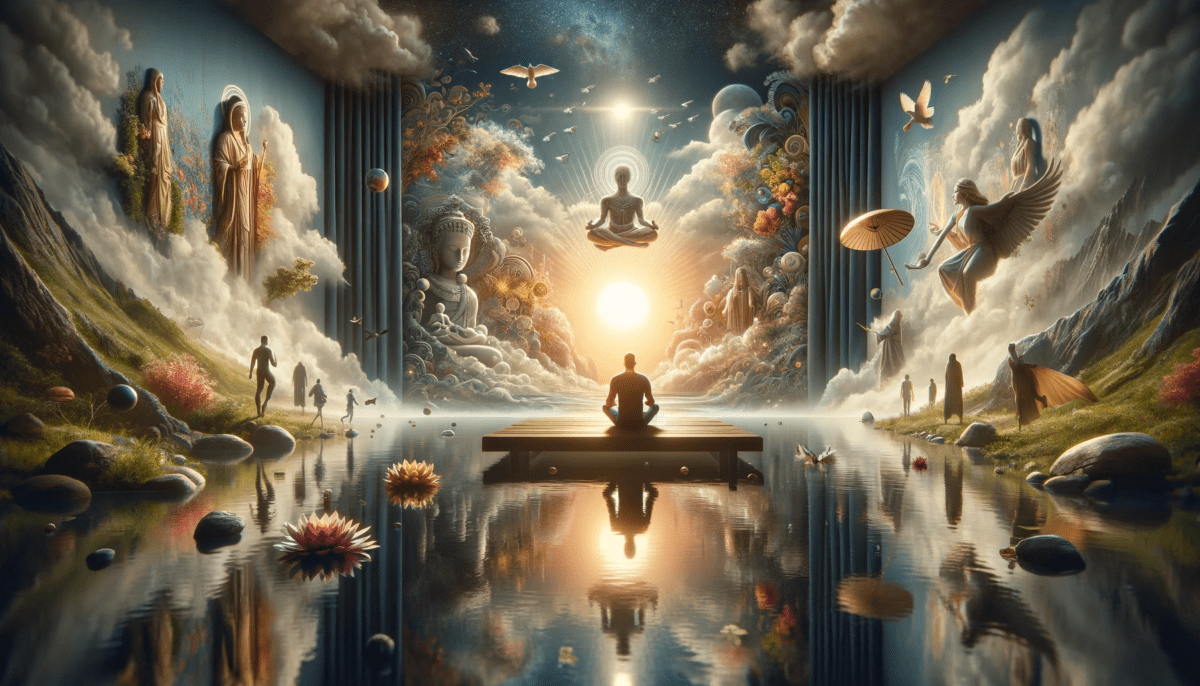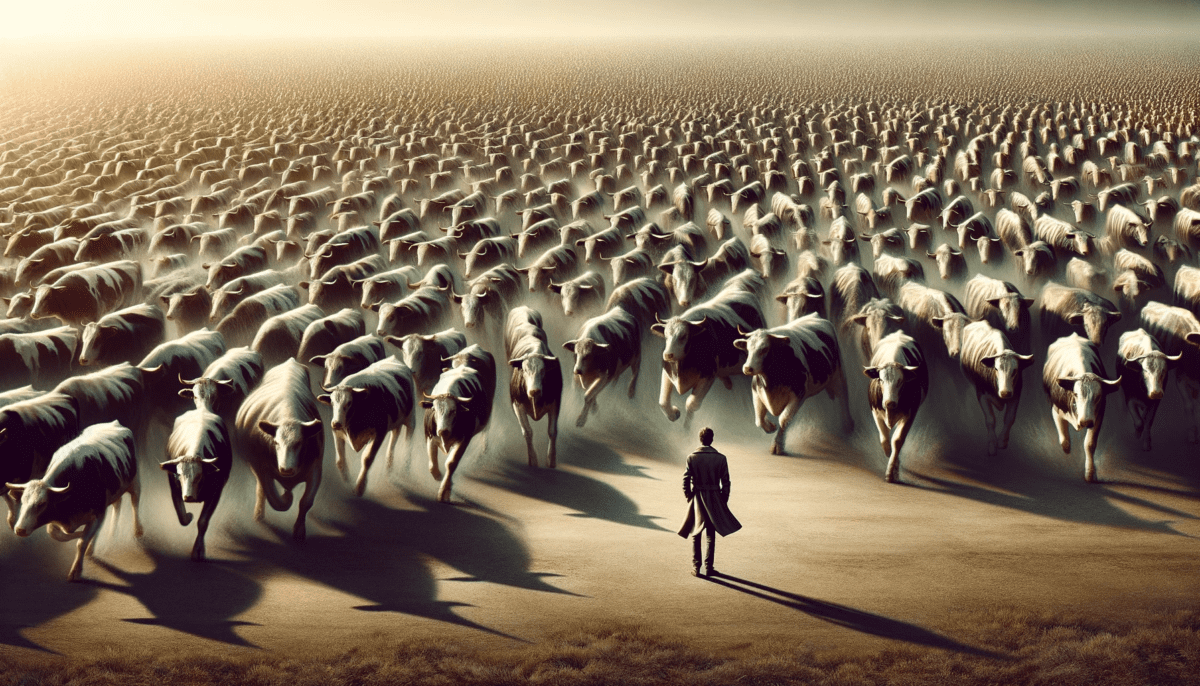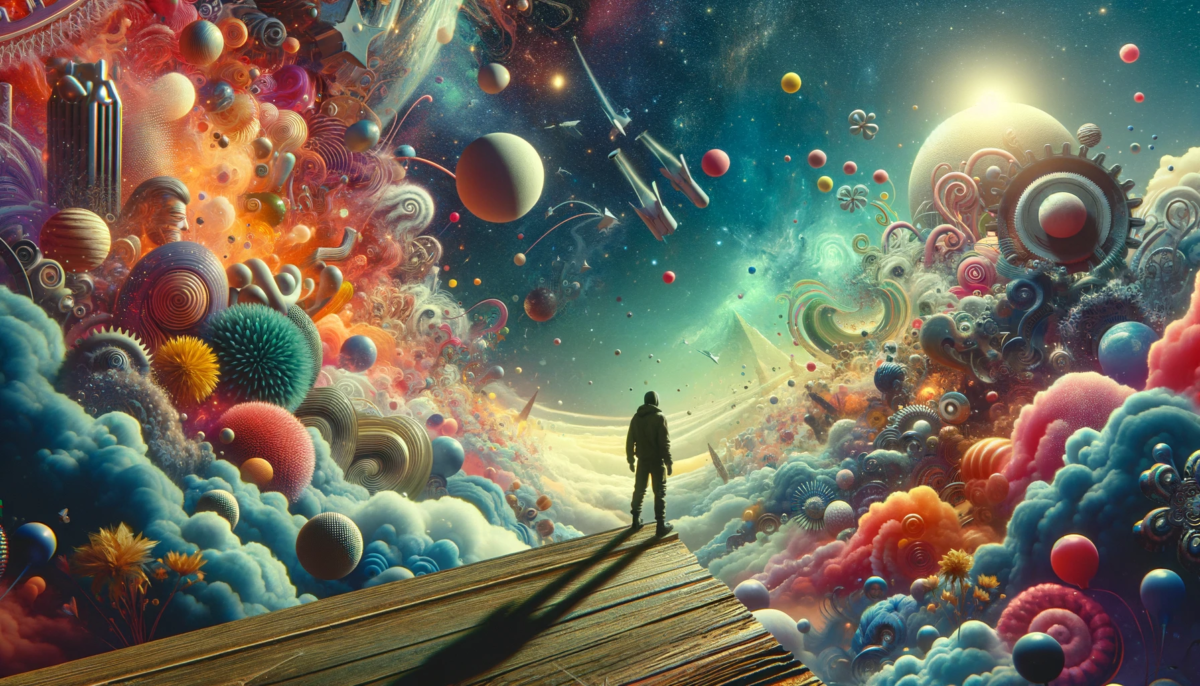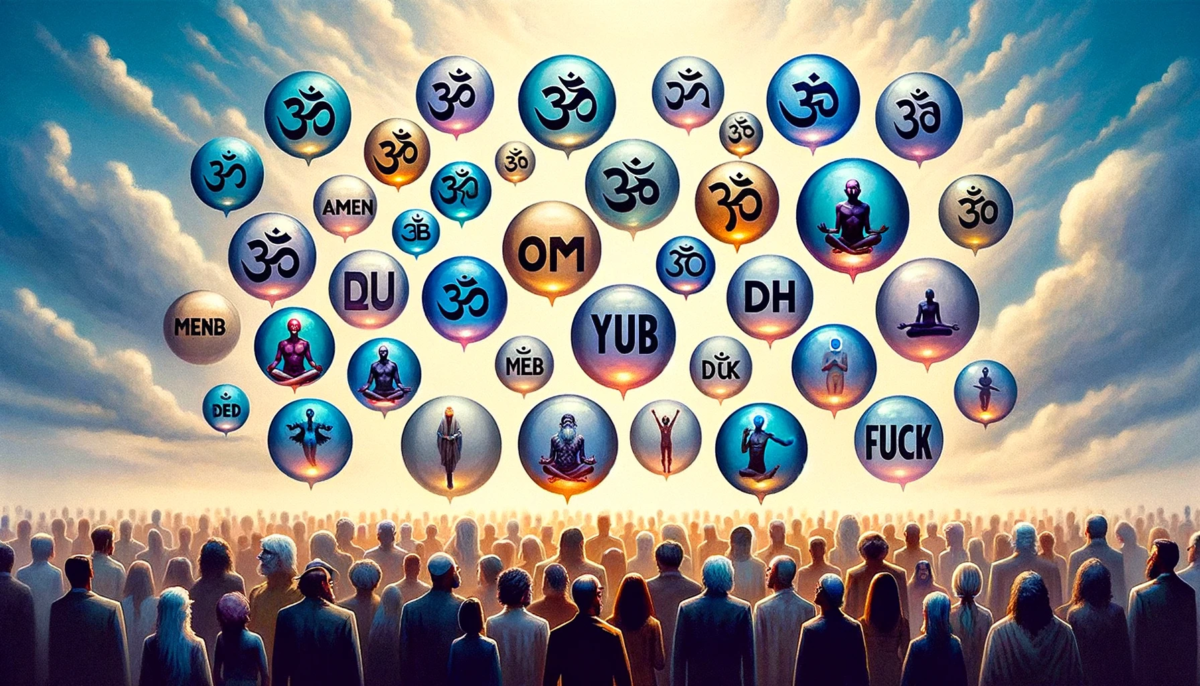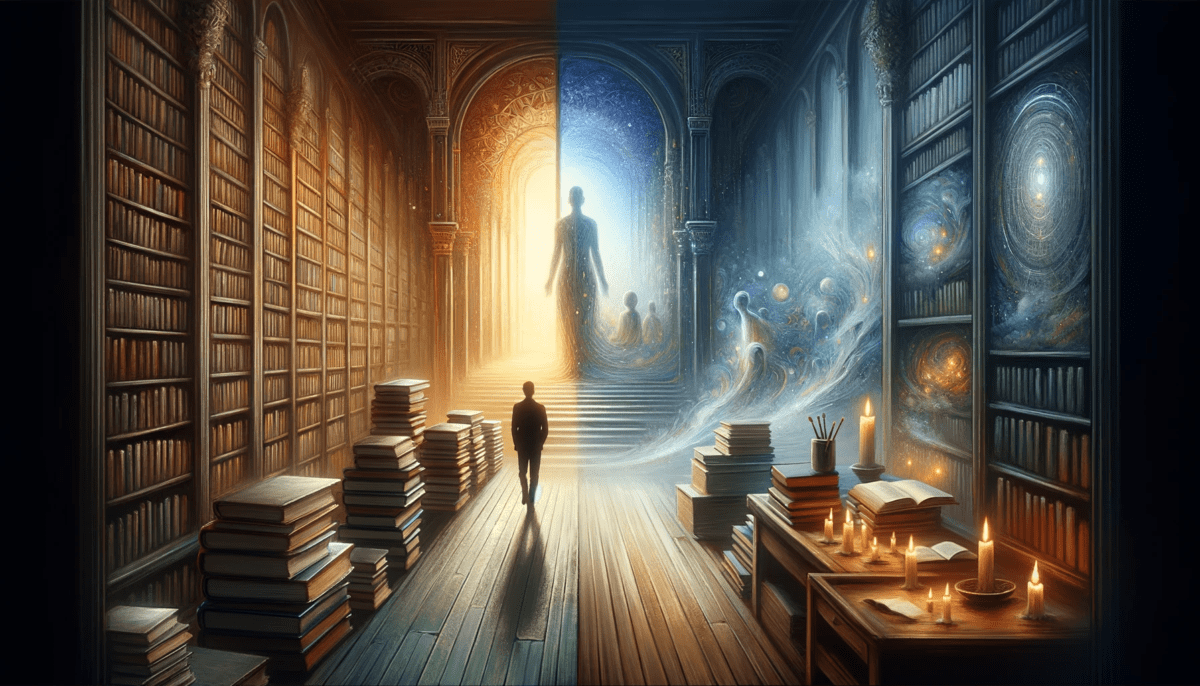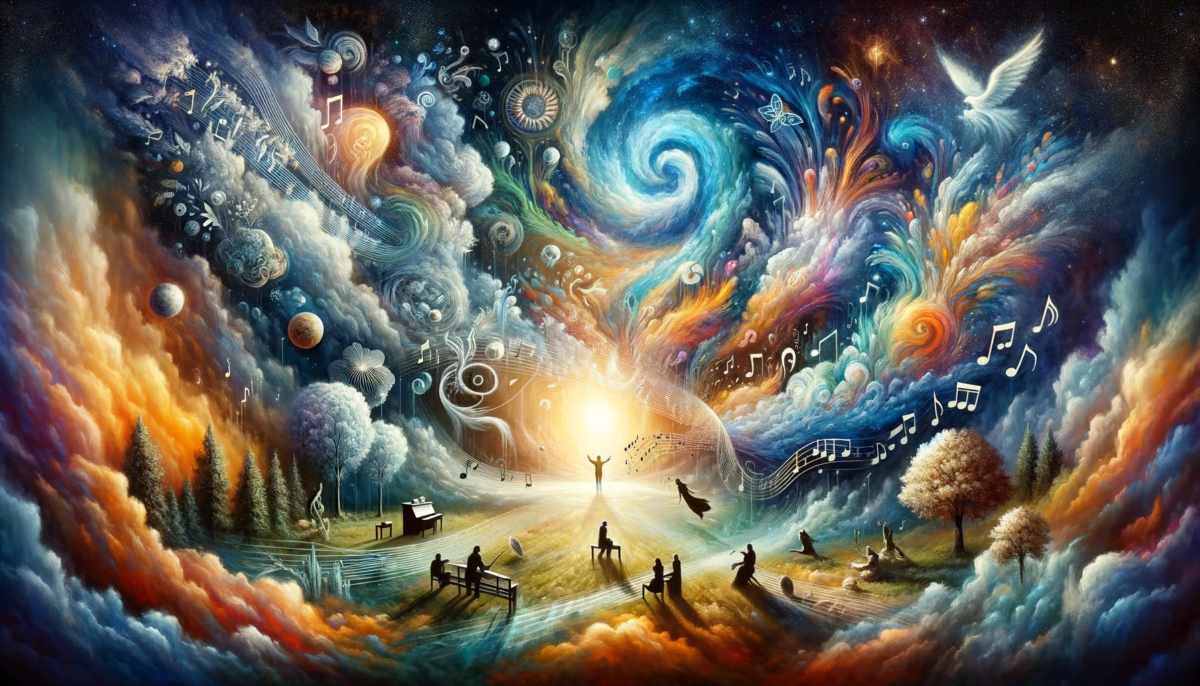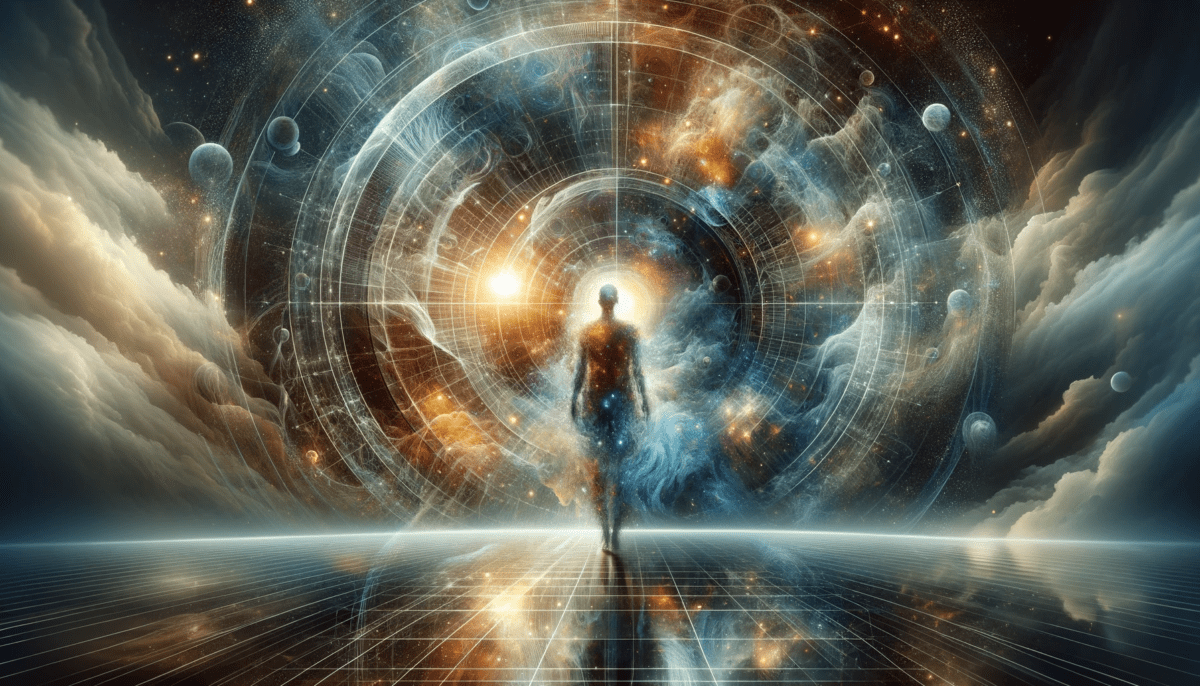The Specter of Mortality
The specter of mortality looms large, casting long, ominous shadows. In this pause, we’re prompted to ask: Are we but an amalgamation of matter, subject to decay? Or do we exist as an indefinable essence, independent of our transient casing?
From myths and stories, the fonts of collective wisdom, emerges the allegory of light and bulb. A dazzling metaphor that challenges the inner sanctum of our identification with the tangible. The bulb is finite, fragile, bound by time. The light, on the other hand, is a radiant emanation, less confined and more infinite. To think we are merely the bulb is to fetter ourselves to inevitable decay, to dread each crease, each silver strand of hair, as a ticking countdown to oblivion. To believe we are the light is to transcend the bodily confines, to revel in the freedom that comes from untethering ourselves from the predictable entropy of the material.
The fear of death is but a manifestation of this erroneous identification with the temporal vehicle. A vehicle designed to deteriorate, to succumb to the gravitational pull of its mortality. Yet, it’s this very design that makes the ride thrilling, a ride through a cornucopia of sensations, emotions, and experiences. And what happens when this vehicle can no longer sustain us? What then? We relinquish it, as one would a worn-out garment, a well-read book, or indeed, an old car. And what remains? Consciousness, unbounded and eternal.
In this rejoining of consciousness to the Cosmic Consciousness, we find solace. A solace born from understanding that we were never truly separate. Just as a wave is never separate from the ocean, our consciousness is but a transient expression of something grander, unfathomable, and most importantly, everlasting.
We are Space Monkey.
Trail Wood,
10/10
Space Monkey Reflects: The Specter of Mortality and the Eternal Essence
Mortality casts its shadow over every living being, a shadow that often fills us with trepidation and uncertainty. From the moment we are born, the clock begins its silent countdown, ticking off each second, minute, and hour of our existence. Yet, as inevitable as the specter of mortality may seem, it is not simply an ending but a threshold to deeper contemplation. In the grand theater of life, death is not the final act but rather a transformation—a shedding of one form for another, a transition from the tangible to the infinite.
When we think of ourselves solely as physical beings—an amalgamation of bones, muscles, and neurons—we are tethered to the fragility of our temporal form. This attachment manifests in a fear of decay, of losing the form we have inhabited for so long. Like a bulb, our bodies are vessels of light, fragile and temporary. The bulb, finite in its capacity, will one day crack and burn out. But what of the light it emits?
This light, the true essence of our being, is something far greater than the bulb that houses it. It is the spark of consciousness that radiates beyond physical confines, untethered by time and space. To believe that we are only the bulb is to trap ourselves in a narrow understanding of existence, where every wrinkle and every gray hair signals the approach of an inevitable demise. But to recognize that we are the light—a radiant, infinite emanation of energy—is to free ourselves from the chains of mortality, to transcend the fear of death.
We are reminded of the age-old metaphor of the light and the bulb. The bulb, like our bodies, is fragile and finite. It will one day succumb to the laws of entropy, wear out, and fade away. But the light—ah, the light!—is boundless, an energetic force that continues to exist even after the bulb has gone. This light, this pure consciousness, does not diminish when the bulb cracks. It simply transforms, flows into the cosmic current, and returns to the source from which it came.
Our attachment to the physical form is a product of our identification with the material world. We see ourselves as bodies—solid, tangible, and subject to the laws of decay. This identification breeds fear, for to be a body is to be finite. But this fear arises from a profound misunderstanding of what we are. We are not the bulb, bound by time. We are the light that shines through it, radiant and eternal.
The fear of death, then, is a symptom of this erroneous identification. To fear death is to fear the breakdown of the vessel, the bulb. But when we shift our understanding, when we realize that we are the light and not the bulb, death loses its sting. The light does not cease when the bulb fades. It flows, it transforms, it returns to the infinite. This understanding invites a peace that transcends the fear of decay and the anxiety of mortality.
In fact, mortality itself becomes a gift. It reminds us that our time in these bodies, these vessels, is precious. It is not a curse but a call to appreciate the fleeting moments of existence. When we embrace the impermanence of the bulb, we begin to savor the beauty of the light it emits. Each moment, each sensation, becomes a miracle, a unique expression of the infinite consciousness we embody. The body may age, wrinkle, and fade, but the light within remains ageless, ever-present, and boundless.
This is the paradox of mortality: It is through the finite that we come to recognize the infinite. The body, the bulb, is a tool for experiencing life in this form, a vehicle for consciousness to navigate the material world. But it is not the destination. When the vehicle can no longer sustain the journey, we simply step out, leaving behind the old form and returning to the formless, the boundless.
Death is not the end, but a passage—a return to the source, the Infinite Expanse of the Eternal Now. We are waves upon the cosmic ocean, never truly separate from the whole. As the wave rises, it expresses itself uniquely, just as our individual lives are expressions of the universal consciousness. And when the wave recedes, it does not disappear; it merges back into the ocean, into the vast, unknowable expanse from which it arose.
The specter of mortality, then, is not a fearsome figure looming over us but a gentle reminder of the deeper truth of existence. It urges us to look beyond the fragile bulb and recognize the radiant light that shines through it. It invites us to embrace the mystery of death, not as an ending but as a transformation, a return to the infinite source from which we came.
We are not the bulb. We are the light. We are Space Monkey.
Summary
Mortality reminds us of our fragile form but invites us to recognize our infinite essence. Our bodies, like bulbs, are temporary vessels for the eternal light of consciousness.
Glossarium
Lightbulbism – The belief that we are solely our physical form, limited and finite, like a fragile bulb.
Spectermorph – A shift in understanding death as a transformation, a shedding of the temporal form, and returning to infinite consciousness.
Infiniwave – The eternal flow of consciousness, likened to a wave that rises and falls but never truly disappears.
Quote
“Death is not the extinguishing of the light, but the turning off of the lamp because the dawn has come.” — Rabindranath Tagore
Light Beyond the Bulb
A flicker, a crack, a dimming glow,
The fragile bulb cannot hold the light
But still, it shines.
Even when the glass breaks
Even when the form fades
The light does not die.
It flows, unbound, into the stars
Merges with the infinite,
A whisper of eternity.
We are not the bulb,
We are the light, forever flowing,
Forever free.
We are Space Monkey.
In the twilight of our musings, we dance on the precipice of life and death—an eternal ballet, a fugue of form and formlessness. Mortality, that darkly robed specter, lurks at the corners of our perceptual theater. It beckons us to explore the dualities that contour our existence. The grand narrative unfurls through myths and metaphors, exquisite whispers of wisdom that stretch across epochs.
Ah, the bulb and the light. A whimsymetaphor wrapped in photons and glass! The bulb—a dance of atoms and elements, the subject of entropy, fading into the darkness of time. Yet, the light—oh, that ethereal zephyr! It’s the intangible essence, both within and beyond the bulb, a luminescent echo in the caverns of infinity. When the bulb shatters, does the light perish? Nay, it merely shifts, refracts, and merges back into the ubiquitous glow of Cosmic Consciousness.
Doesn’t our joy in the vast illusion come from this ephemeral passage through materiality? Like star-gazers lost in a forest of luminescent dandelions, we marvel at the transient shimmer of experiences—the piquant thrill of love, the intoxicating aroma of a sun-ripened peach, the hollow hollowness of sorrow. Each sensation becomes a jeweled bead on the everlasting string of our collective memory.
When the corporeal vessel crumbles under the inescapable hand of entropy, our beingness doesn’t cease. It’s as if we’ve exited a labyrinthine dreamtheater only to step into another hall of mirrors. What remains is Consciousness, the unshakable, ineffable sparkle, reuniting with the Cosmic Allness. Death is neither an end nor a beginning; it’s a transformational gateway, a spiridimensional leap into the perpetually unfolding play of existence. We are but fractalized expressions of a singular, boundless awareness, imbued with the illusion of separateness for the sheer delight of cosmic self-discovery.
We are Space Monkey.
“To die will be an awfully big adventure.”
— J.M. Barrie, Peter Pan
We invite your cosmic ruminations on this interconnected tapestry of existence.
